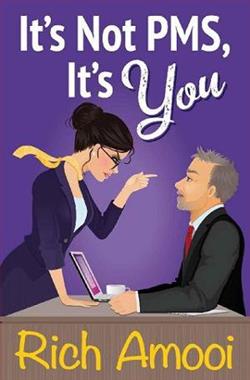Page 21 of Guess Again
Milwaukee, Wisconsin Wednesday, July 16, 2025
THE MAHOGANY TABLE WAS IMMACULATE AND DOMINATED THE CONFERENCEroom. When the space served its true purpose, those who ranThe Anonymous Clientoccupied the sixteen places around the table.They included the chief financial officer, the head of clinical, the practice manager, board members, and Dr. Lindsay Larkin, who always sat at the head of the table as the founder, owner, and CEO of the booming online company. Today, though, the room and the table were empty, and Lindsay decided on a less regal location in the center.
She stood when the reporter fromThe New York Timeswalked into the conference room.
“Dr. Larkin? Gayle Kirk.”
Lindsay smiled. “Hi Gayle. Welcome. And, please, call me Lindsay.”
“Thank you. This place is amazing,” Gayle said with wide eyes. “Your assistant gave me a tour.”
“Thank you.”
The floor-to-ceiling windows of the conference room looked out over Lake Michigan, where sailboats drifted under the sweltering summer sun.
“And thanks, by the way, for coming all the way to Milwaukee to do this.”
“It’s my absolute pleasure,” Gayle said. “I’ve been trying to get this interview for nearly a year, so I should be thanking you. I know how busy you are, so I’ll try not to take too much of your time.”
“The morning is yours,” Lindsay said.
Gayle took a seat and pulled notes from her bag.
“My intention is to introduce our readers to you and your unique company, delve into your background, and then take a deep dive into your philosophy on mental health and how you have single-handedly revolutionized the psychology industry with your brand of online counseling.”
“Sounds expansive,” Lindsay said. “I’m ready when you are.”
“Great. Tell me about your background.”
“I was born and raised in Cherryview, Wisconsin. It’s a small lake community just outside Madison. I attended UW Madison, where I studied psychology. When I graduated, I wanted to avoid the medical industrial complex and forge a new way forward to help those looking to improve their lives.”
“Let’s take a detour there. How do you define the ‘medical industrial complex’?”
Lindsay smiled. “Simple. It’s our current healthcare system. Although, a more accurate term is ‘sick care’ because the whole system is designed to produce chronic disease, and then perpetually treat those afflicted by the diseases the system creates with an endless stream of pharmaceutical products.”
Lindsay smiled again.
“Trust me. I know many consider my position on this topic extreme, but I have yet to meet anyone who can disprove it.”
“Disprove that the U.S. healthcare system creates, rather than cures, disease?”
“Let me give you an example,” Lindsay said. “The sugar and grain industries are massive contributors to and influencers of the U.S. government. This is not speculation, just look up the numbers. The sugar and grain industries spend millions on lobbying efforts each year in order to get their agendas passed. The result of this decades-long campaign is that the FDA has placed grains and carbohydrates as main components to a healthy diet. The result? Over the last five decades, America has become fatter and sicker. Forty percent of Americans are obese. About seventy-five percent are chronically overweight. This has led to, among other things, a diabetes epidemic. And who profits most from this overweight, diabetic population? The pharmaceutical companies that produce medicine to treat this chronic disease. A disease, by the way, that affected a much smaller portion of the population in the ’60s, before sugar and carbs were pushed as part of a healthy diet. About one point five percent of the population suffered from diabetes in the 1960s. Today, it’s over eleven percent.
“So, doctors are busy treating their overweight, diabetic patients, while pharmaceutical companies turn giant profits churning out new medication to treat a condition that is mostly self-inflicted. That, in a nutshell, is the medical industrial complex. And diabetes is just a single example. My approach to mental health is to keep every client who comes to us for help out of the vicious cycle of that convoluted system.”
“And how do you achieve this?”
“First, we don’t employ members of the medical industrial complex. That includes psychiatrists who push drugs on their clients. Nor do we refer clients to psychiatrists.”
“You treat all your patients in-house, in other words.”
“First, we don’t havepatients. We have clients. The word ‘patient’ suggests someone suffering from disease, and suggests that medicine is the ultimate solution. Our clients are simply individuals who need our help to become healthier. And we don’ttreatclients, we help them achieve their goals.”
“Well, your philosophy is certainly catching on. You’re headquartered here in Milwaukee, but you have offices throughout the country. Isn’t that right?”
“Yes.The Anonymous Clienthas offices in all fifty states. But the offices are more for administrative purposes than for places to help clients. Most of our work with clients is done online.”
“Yes,” Gayle said. “That’s what I want to discuss next. You’ve revolutionized the psychology industry by bringing it online. Can you tell me how you’ve managed to take up so much market share of the online counseling space so quickly?”















